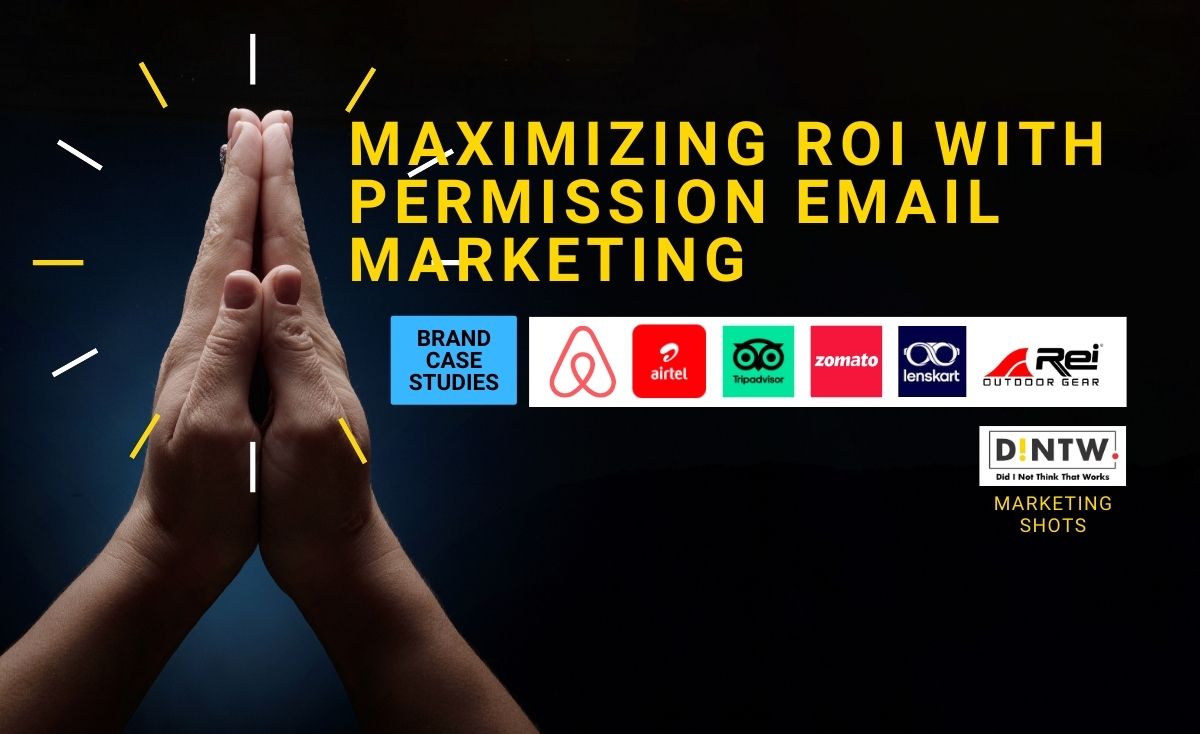Users are flooded with unlimited emails about offers, advertisements, reward programs, and sweepstakes (million $ ones). The most effective email marketing strategy will fail due to insufficient context and permission. Businesses must pursue permission for email marketing before sending bulk emails to avoid being labelled spam.
Remember! An Email Marketing Campaign is a privilege, not a transaction.
Zomato used food preferences and purchase history to personalize their email communication. They sent personalized emails with restaurant and dish suggestions using this information. Zomato has an engaged email list thanks to its email marketing strategy. They outperform industry averages with 30% open and 6% click-through rates.
In this article, we’ll talk about permission email marketing, its benefits, and how to set up a permission-based email marketing strategy.
What is permission marketing?
Permission marketing is asking customers for permission to send them promotional messages. It assists businesses in increasing customer trust and loyalty as well as engagement. If the customer believes he controls the marketing messages he receives, the brand can establish a trust and loyalty relationship.
What is permission email marketing?
Obtaining explicit consent from someone before adding them to your email list and sending them marketing communication is called “permission” in the context of email marketing. This can take various forms, but generally, the subscriber provides their email address and checks a box or takes other actions indicating that they want to receive marketing emails from your company.
Businesses can obtain explicit or implicit permission from their subscribers.
The best kind of permission is explicit permission, meaning the potential customer must actively agree to get your digital marketing emails. Example: a sign-up form on your website, in which the subscriber provides their email address and explicitly checks a box indicating they wish to receive your emails.
In contrast, implicit permission is more ambiguous. It can be obtained in various ways, including purchasing or event registration. However, because the subscriber may have been unaware that they were signing up to receive marketing emails, implicit permission is generally regarded as weaker than explicit permission. For example, an online buyer will provide his email address to receive a confirmation email and then track the order, which brands will use for upselling and cross-selling.
Why is permission marketing so important in email marketing?
There are a few reasons why permission is so important in email marketing:
- Obtaining email addresses by permission is required by law. Most countries, including the United States, Canada, and Europe, require businesses to obtain consent from their subscribers before sending them marketing emails. Failure to comply with GDPR can result in significant fines and legal action.
- When you ask your subscribers for explicit permission, show them you care about their privacy and inbox. It builds trust and credibility with your subscribers and drives repeat business in the long run.
- Open rates of a marketing email are as high as 70%, and click-through rates can reach over 7.5%. Getting permission also tell ISPs that you are a reliable sender, which boosts your credibility and email deliverability.
- People are much more likely to respond to promotional emails they have explicitly requested. You’ll likely see higher open, click-through, and conversion rates by emailing people who want to hear from you.
- Businesses can reduce email marketing spending by only communicating with customers genuinely interested in what they offer.
How to Implement permission marketing?
Permission marketing is an always-on process which should be executed progressively. Here are a few tips for implementing a successful permission-based email marketing strategy:
- “Don’t be a spammer! Always ask for express permission before sending marketing emails to your subscribers. This helps ensure that customers only receive messages they are interested in.
- Keep messages relevant and targeted: It ensures that direct marketing messages are more likely to be read and acted upon.
- “Did you know that sending unsolicited marketing emails could result in legal action?” Always keep a record of the consent received from your subscribers before sending any communication.
- Email marketing is about building relationships, not just making sales. If users are not opening your emails, put them in a cooling-off period. Bombarding doesn’t help.
- Tune your email marketing strategy according to the campaign’s performance. Track customer data, engagement, and other critical email metrics.
- Test emails on a sample base to ensure they perform as expected. If possible, A/B test between email content and design.
- “Building a quality email list takes time and effort, but it’s worth it in the long run.” Always ask for permission, focus on engagement, and watch your email marketing ROI soar!
- Use a Marketing Automation tool that gives you insight into the health of your campaigns and email deliverability. The email marketing software keeps checking unsolicited emails by removing or pausing unsubscribed and unengaged subscribers.

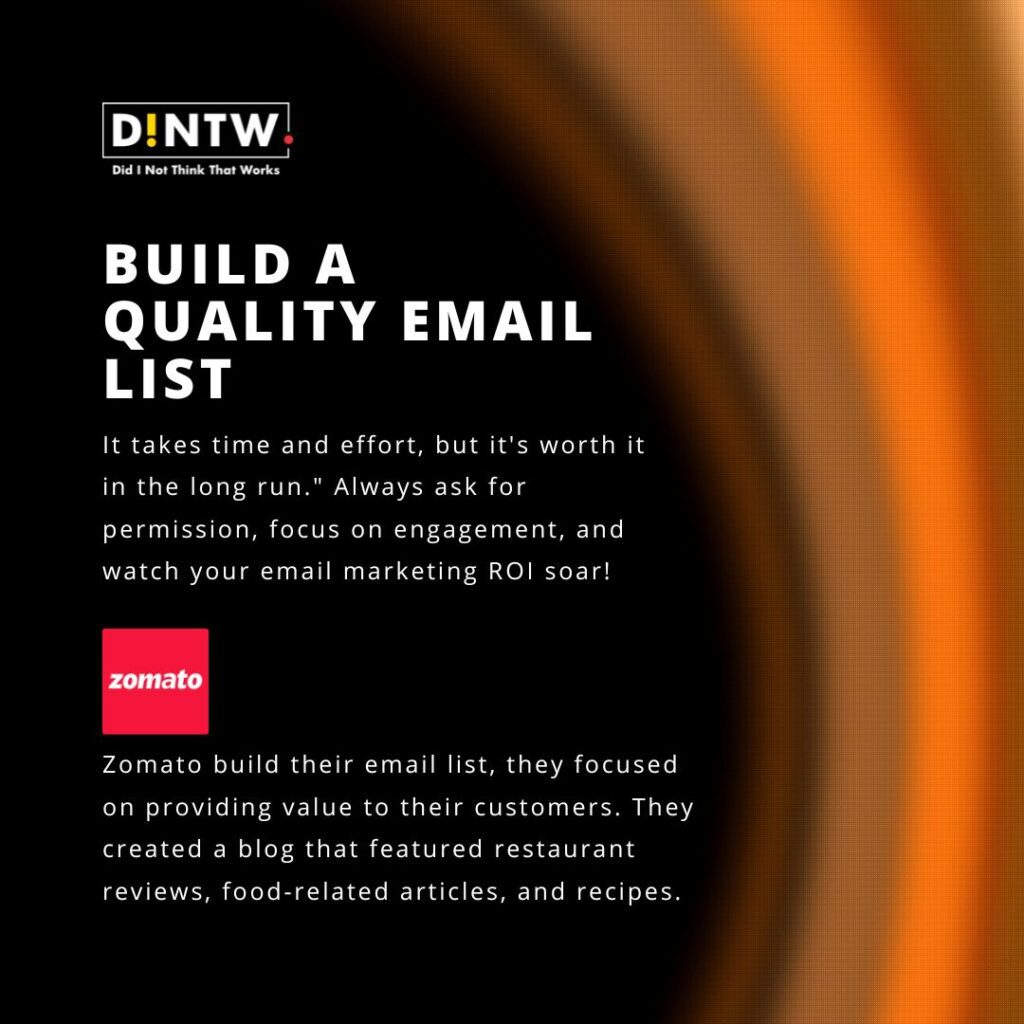
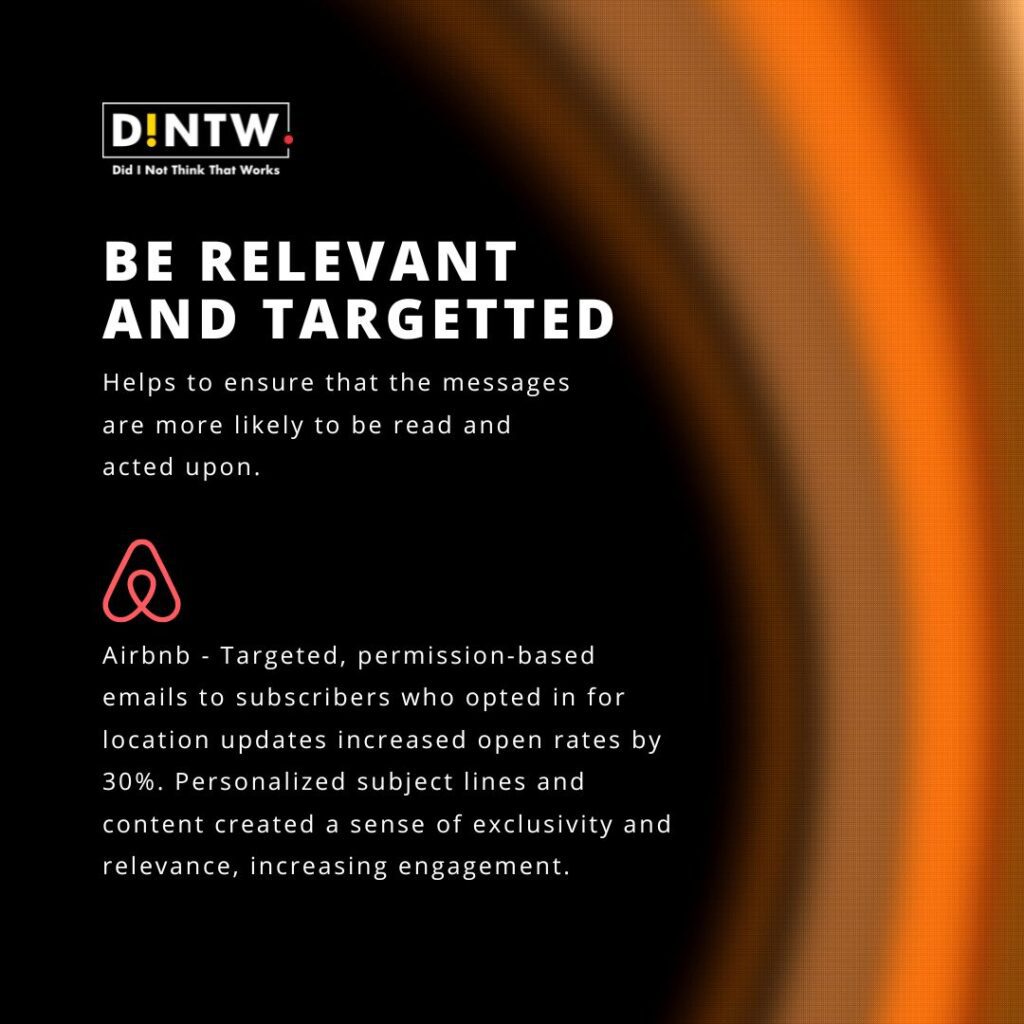
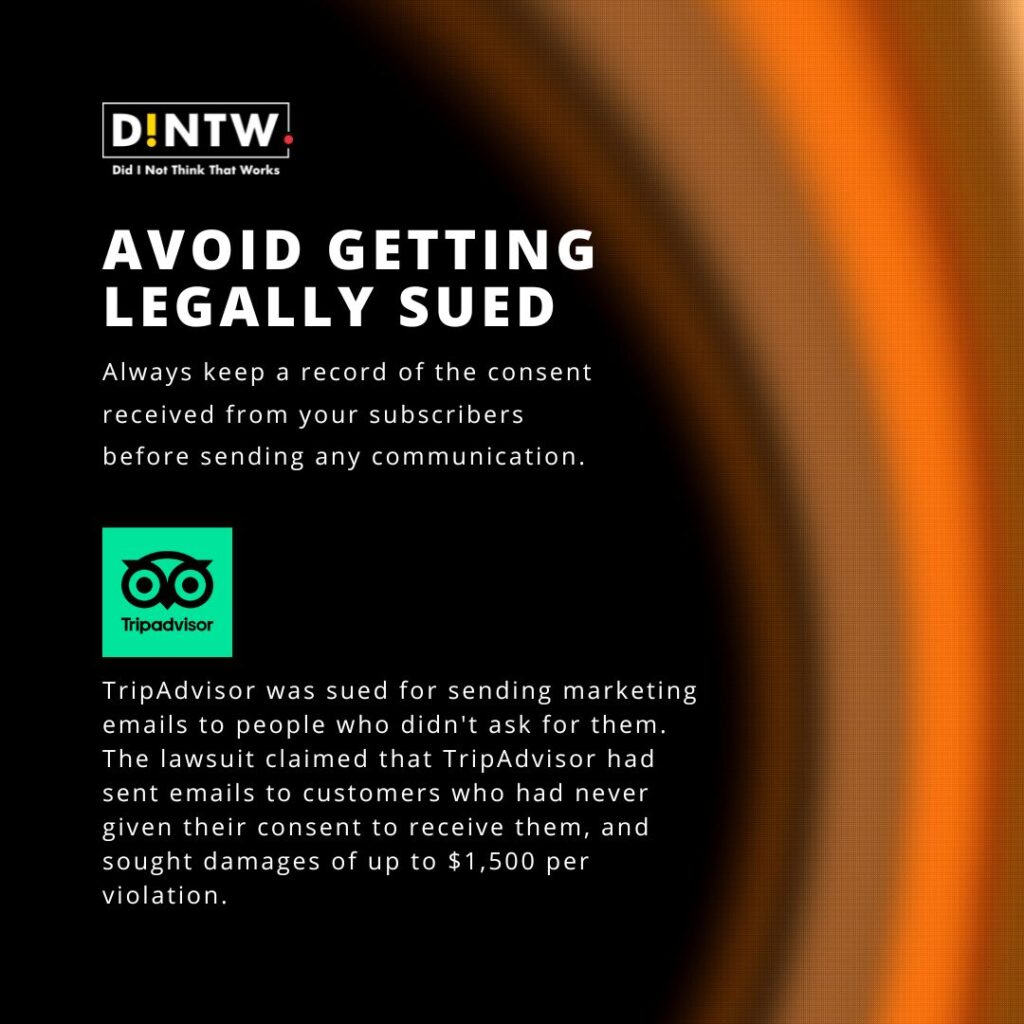
How to build a mailing list?
Marketers create a comprehensive plan for permission email marketing to segment and grow email databases. Brands and businesses have used one or more methods to create a well-segmented database.
- Newsletter subscriptions: Make an offer if you believe your site’s content will be helpful to your readers. This enables you to send promotional messages to customers in addition to the newsletter. However, please focus on the newsletter content and promote only a small part, or users will unsubscribe.
- Make a tangible offer: You might recall signing up for some free course or webinar via email. Users become addicted to the content they value. After you create social proof, This will enable the sale of premium courses or even consulting services.
- LinkedIn allows businesses to offer newsletter subscriptions on their company pages. It is an excellent method for developing a devoted following. The only issue here is that the subscribed audience stays on LinkedIn. Make this your starting point for attracting users to your captive newsletter.
- Businesses must use opt-in forms on their website, blog pages, and emails (transaction emails) to let customers sign up for promotional messages. Transactional emails generate more than 40% of email signups.
- Increase the perceived value of subscribing and make it more attractive to potential subscribers. Offer incentives such as exclusive content, discounts, or free signup trials.
- From time to time, surprise the people on your email list with special deals, gifts, and guaranteed gifts. The fear of missing out has been shown to increase loyalty.
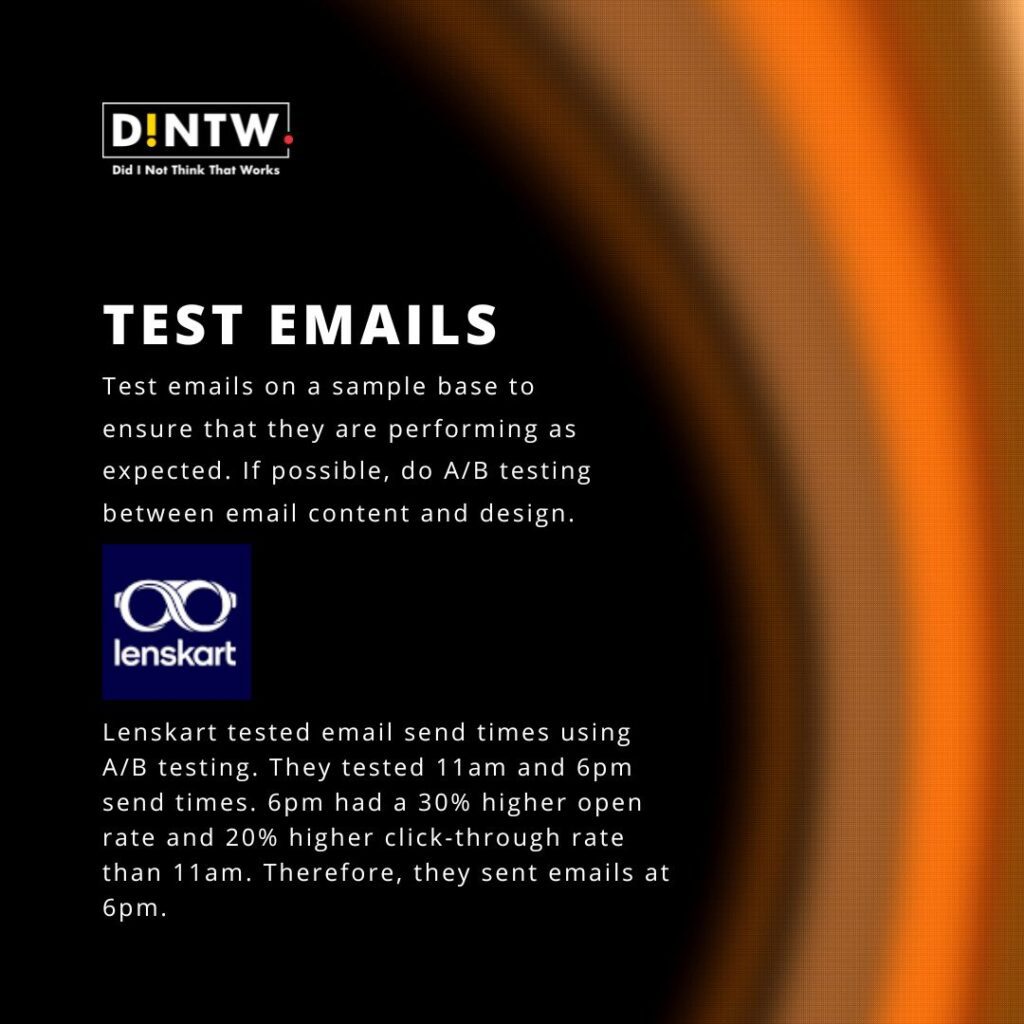
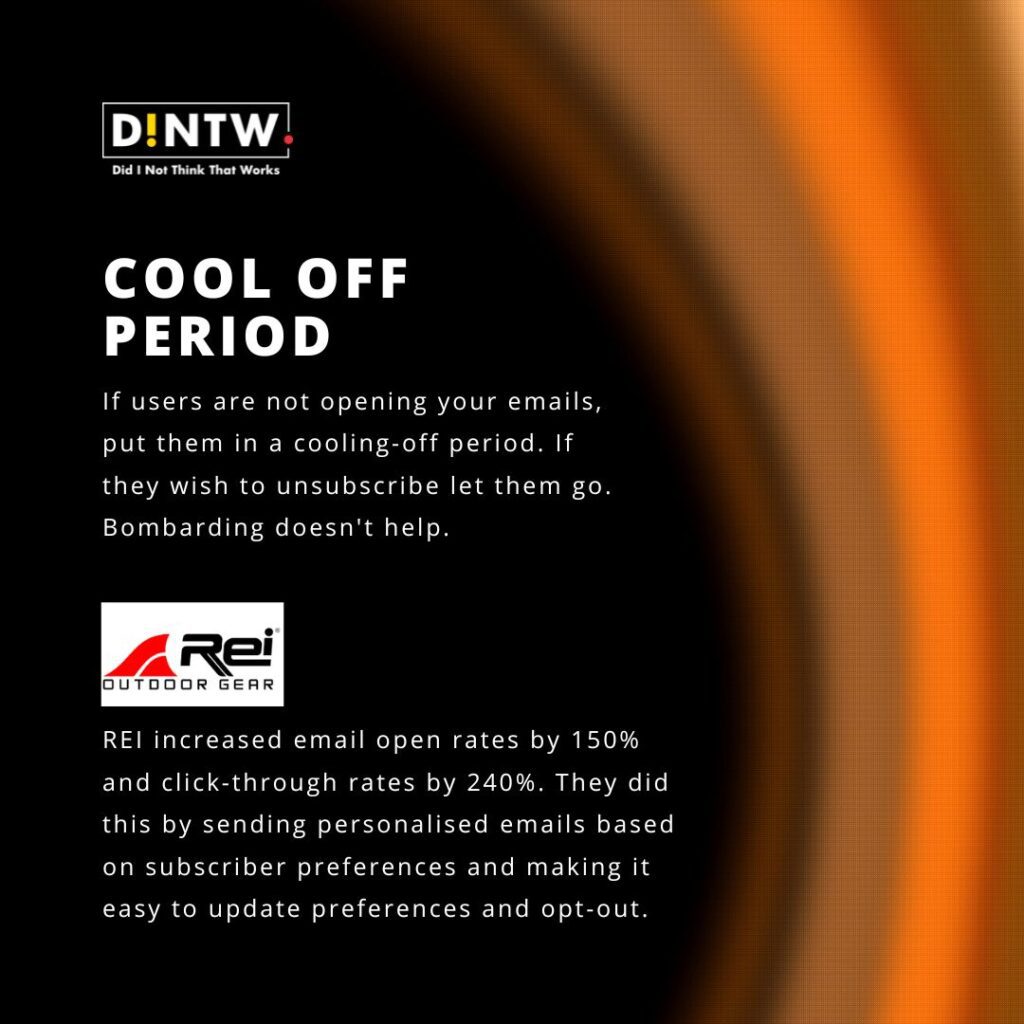
Personalization in Permission Email Marketing
Personalization is the best option for an email marketer to make the conversation relatable. Engaging the customer in a faceless email campaign is challenging unless your content triggers an impulse need. Therefore, segmenting the database before triggering an email campaign is imperative.
Since introducing personalised subject lines, brands have seen their open rates double. For example, an email with the subject line “Happy Birthday, [Name]! Here’s a special offer just for you” will likely perform better than a generic subject line.
Using subscriber behaviour data, such as browsing or purchase history, to trigger personalised emails can help create more targeted and relevant messages. For example, a personalised email featuring items the subscriber has recently viewed or added to their cart is a proven method to enhance customer lifetime value (LTV).
Dynamic content enables a travel company to present different content based on past behaviour and preferences. For example, when the company personalised every email and displayed different destination options based on the subscriber’s previous travel history, preferences, and inquiries, the CTA on emails increased to 8%.
Conclusion
Permission email marketing is essential for any business that wants to get more leads and make more sales. Follow the tips outlined in this blog post, and your campaigns will be successful. Also, start using automated email marketing tools and spend more time designing and analysing emails.
If you want your email marketing campaigns to be more successful, you must use permission-based marketing. If you wish to discuss your personalised email marketing strategies with us, please book a Free! Discovery Call. And let us take you through a few case studies.

